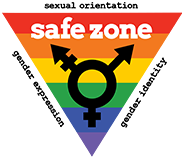
Sexual Assault Awareness has not only been limited to the month of April. Sexual Assault Awareness has been around for many years, even previous to the past 23 years when it was made an ‘official’ awareness month. Since the mid-1900s, the topic of sexual assault, equality, and domestic violence have been ongoing. As the years progressed, the topic has been brought to the world’s attention more frequently. Beginning in the 1940’s, advocacy for equal rights started with leadership from black women and women of color. This opened room for discussion on the matter of sexual assault and violence. As the years progressed, the topic became more influential in communities.
By 1971, the first rape crisis center opened in San Francisco. Therefore, the topic of sexual violence came to the forefront of discussion throughout the country. This helped influence the start of Take Back the Night, which was established seven years after the first rape crisis center opened its doors. The fight for awareness continued to spread, which eventually aimed for government support and policy change. Thus, the creation of Violence Against Women Act in 1993 was passed. This enforced law officials to treat sexual violence as an act of crime.
In 2000, the National Sexual Violence Resource Center and the Resource Sharing Project asked other organizations advocating for Sexual Assault Awareness for their preference of color and symbol to represent sexual assault. Which became the start of the universal use of the teal ribbon as the symbol for sexual assault awareness. In 2001, April officially became the month for Sexual Assault Awareness (SAAM). However, before the month was officially set, advocates were already holding marches, protests, etc., in April. In many cases, they held a week in April and dedicated it to sexual assault awareness.
Advocacy of sexual assault awareness is still ongoing. Advocates and organizations are continuously spreading the goals of sexual assault awareness in diverse communities. Many advocates are spreading awareness in areas such as Hispanic/Latino communities, colleges, and workplaces. Here are some ways you can spread sexual assault awareness:
1. Respect others and their space.
2. Educate yourself on the issue.
3. If you see sexual assault or harassment, say something.
4. Support survivors and do not blame them.
5. Volunteer and engage in the community.
6. Donate to sexual assault crisis and prevention organizations.
Written by: Monique Wade
Edited by: Beth Ganion



